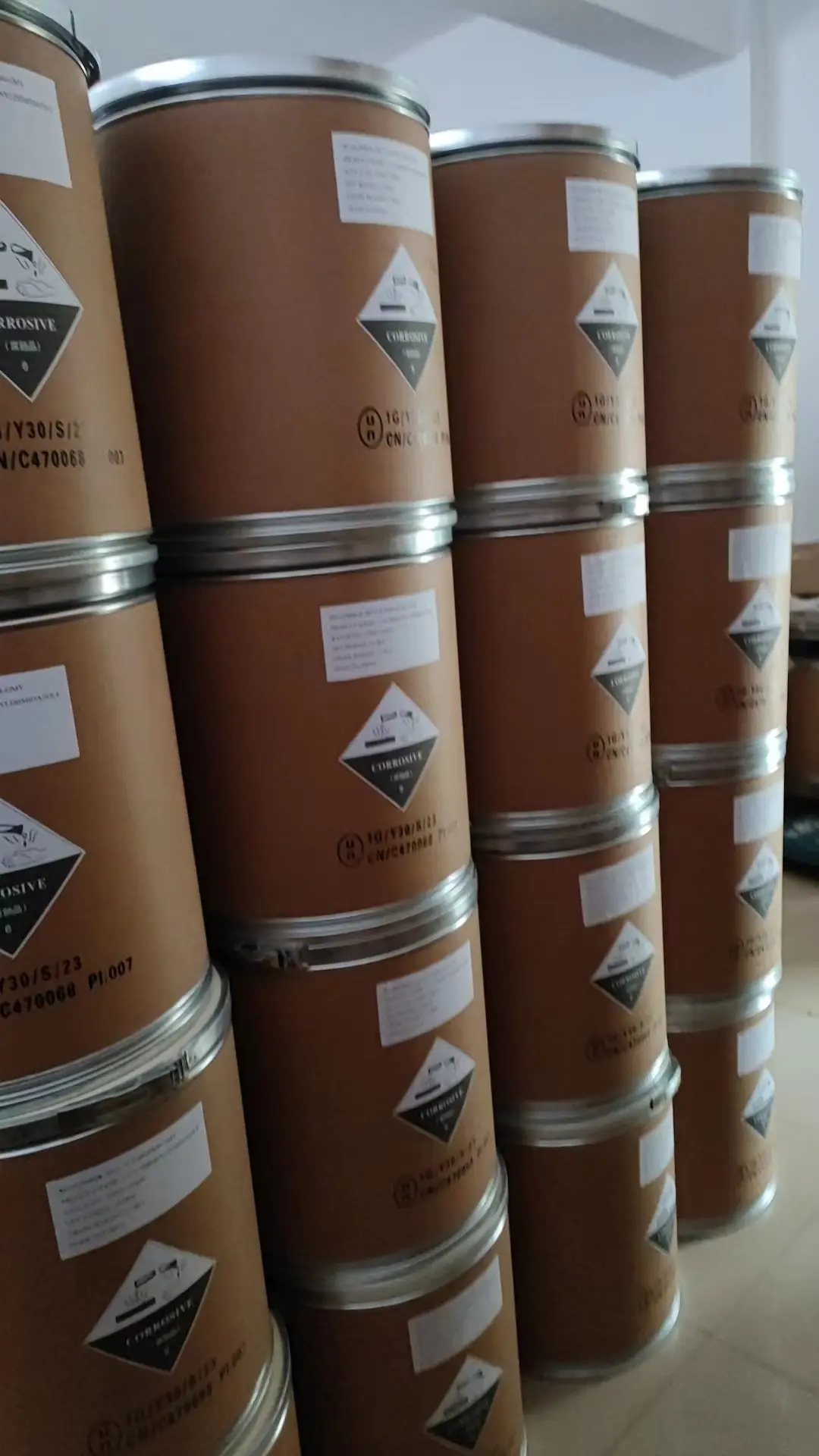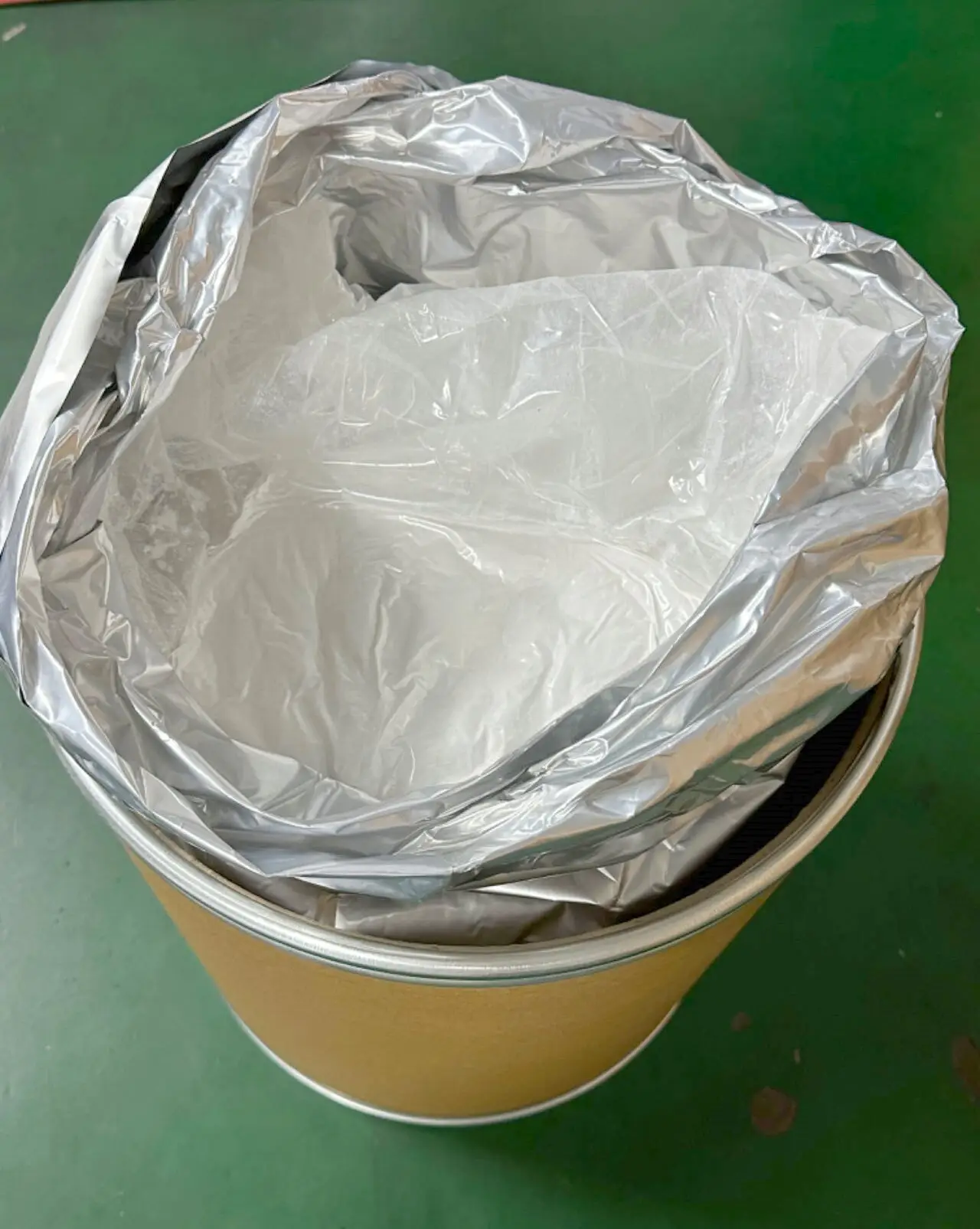An éifeachtúlacht a uasmhéadú i imoibrithe comhcheangail amide
I gcomhdhéanamh orgánach, tá foirmiú bannaí amide fós ina theicníc cloch bun, go háirithe i ceimic peiptíde, ceimic leigheas, agus forbairt pholaiméir. I measc na n-imeachtaí go leor a úsáidtear le haghaidh cóipeáil amide, CDI (carbonyldiimidazole) tá cáil air mar gheall ar a mheicníocht imoibrithe éifeachtach agus simplí. Cé go dtugann CDI buntáistí iomadúla, éilíonn uasmhéadú toradh i bhunaíocht banna amide atá idirghabhálaithe ag CDI aird chuimhneach ar choinníollacha imoibrithe, ar roghnú na mbonn, agus ar theicnící íonúcháin. Déanann an t-alt seo dul i mbun dea-chleachtais agus optimizations straitéiseacha chun toradh agus iontaofacht a fheabhsú i imoibrithe comhcheangail amide bunaithe ar CDI.
Torthaí a fheabhsú i CDI -imeachtaí leithéidí a dhéanamh difríocht mhór i gcoibhneas leis an éifeachtacht taighde agus an réadúlacht tháirgeála. Túiscint ar na habhair conas a iompraíonn CDI le haidrithe carboxylic agus le haimíní féidfidh le hiontaoibh soléirí a bheith acu ar an gcomhthuathal imoibriú agus cabhrú leo caillteanais a laghdú mar gheall ar imoibríonna taobh nó neamhiomlánacha.
Túiscint ar CDI agus a hiontaoibh
Forbhreathnú ar Iontaobh CDI
Tugann CDI feidhm trí haidrithe carboxylic a ghníomhachtú chun meathair imidazol acyl a chruthú. I ndiaidh sin, éagmaíonn amine nuicleaffiléadach leis an meathair sin chun bonn amíd a chruthú. Seoltar imidazol agus dióksaid carbóin amach mar tháirgí tábhachtacha san imoibríocht, is iad seo go hiondúil neamhchabhachtach agus éasca a bhaint. Ar an gcontrár le hagóidí níos troime, tugann CDI forbartha iontaobh cothrom le chéile a chabhrú le himoibríonna roghnach a bheith ag teocht íseal.
Lagannóidh an bealach meicniúil seo chomh maith dóthchaí ar aithghiniúintí taobh go minic a fheictear le himeartanna níos mótháibh cosúil le clóraidí aigéad. Tugann séardánacht an t-imeartais acyl imidazole am do úsáideoirí chun seoltaí iompráidh casta a láimhseáil gan laghdú suntasach.
Meáin Imeachtacha agus Meáin Imeachtacha
Tá rogha an tuaslagóra ról ríthábhachtach ag imeachtaí a mheastar le CDI. Úsáidtear tuaslagóirí cosúil le DMF, DMSO, agus THF go minic mar gheall ar a gcumas bunaithe agus CDI a thuaslagadh go héifeachtach. Tugann solubility de CDI san iad sin meáin reachtúil cothrom a chothú, agus mar sin méadú ar rátaí tiontaithe.
Tugann úsáid na dtuaslagóirí sára agus neamh-uiscis cuí freisin cosc ar hydrolysis réamhshamhail de CDI, agus a choinneáil ar a hinneachas le linn an imeachta iomláin. Tá rialú na leictreacha i gceist i gcónaí, mar is é CDI meitseánach agus is féidir leis an mbeith ag bréagáil mar thoradh ar uiscis.

Teicnící Optamaithe Imeachta
Stoichiometry agus Comhfhreagraí Reagaithe
Tá an-chosúlacht idir CDI, an t-achar bóireannach, agus an-aimín leis an méid a thagann as an mbriseadh. De ghearrthábhacht, úsáidtear beagán níos mó CDI (1.1 go 1.5 cothroigh) chun cinntiú go mbeidh an t-achar go hiomlán amhail. Ar an mbealach céanna, úsáid beagán níos mó aimín (1.1 go 1.2 cothroigh) féidir leis an mbriseadh a thiomáint go dtí an deireadh.
Is féidir an ordú a chuirtear na réagaithe isteach a athrú chun éifeachtúlacht a fheabhsú. Má chuirtear CDI leis an t-achar roimh an t-aimín a chur isteach, is féidir leis an iomlán a chruthú ar an t-aidhmheascán imidazól acyl. Léifear an méid seo a chéile an comórtas idir an t-achar agus an t-aimín as CDI, ag fheabhsú an mholta.
Rialú Teochta agus Am Briseadh
Déantar i gcónaí réacsainí a mheaitseálann CDI ag teocht seomra, ach is féidir toirt a mhéadú trí théip a athrú. Chun taspáin a luaithe nó hiontais stéaraimhe a thascadh, is féidir an t-éifeacht a luathú trí théip a mhéadú go 40–60°C. Ba cheart, áfach, téip ardaithe a sheacht a sheachaint chun degradáid mhodh a chur ar an tsubstraig íogair.
Tá coisc ar an gceasrú chomh tábhachtach chéanna. Cé go bhfuil réacsainí CDI i gceasrú tapa, cuireann an t-am le haghaidh críochaithe an réacsain gan a bheith ró-fhada ar stop le haghaidh forbhéart a chruthú. Is féidir le haghaidh chromatagrafaíocht leathbhreac (TLC) nó speictrascópacht IR in ionad éigin cabhrú leis an dul chun cinn a rianú agus le haghaidh pointí críocha réasúnta a chinneadh.
Meastóireacht agus Meastóireacht Struchtúrtha
Imdhallacht Aigéid Carbhuicséil agus Amin
Tá dul chun cinn ar na fo-bhunstáidí ag baint mhór leis an dtoradh den imhoibriú. Bíonn na h-achranna carbaíneacha agus na hairmíní céanna ag imhoibriú níos éadroí le CDI. Ar an lá eile, b'fhéidir go mbeadh an-tiontás níos faide nó coinníollacha modhnaithe ag baint le haghaidh na n-achranna nó na n-airmíní dearfacha chun toirmeasctha a bhaint amach.
Is féidir leis na hathruithe ar na grúpaí a bhaineann leis an achar agus leis an t-aimín éifeacht a bheith acu ar an nuicleofíleacht agus ar an t-eilifíleacht a éilítear chun an céim chónachta a chruthú. Nuair a bhítear ag obair leis na fo-bhunstáidí atá caillithe nó atá cosanta, is minic a bhíonn an réamhghníomhú le CDI agus ansin an t-aimín a chur isteach faoi choinníollacha rialaithe ina ionad eile.
Inscéid Teagmhairc Grúpaí Feidhmí
Tá CDI comhoiriúnach le raon mór grúpaí feidhmí, lena n-áirítear aibhneacha, hiontaí agus éitilidí. Mar sin féin, is féidir leis na himhoibríocht a bheith ann nuair a bhítear ag obair le na nuicleofílí láidre cosúil leis na fionán nó na tioilí, a bheith ag comórtas leis an t-aimín maidir le hachrú.
Is féidir na grúpaí cosanta nó na tacaithe masca sealadacha a laghdú ar na dúshlánanna seo agus a chumamh foirmiú amaid déanta roghnach. Is féidir leis an gcruth neartmhar a bhíonn ag CDI faoi choinníollacha mheith baile a chothú go roghnach agus a laghdaíonn an risce a tharlaíonn ar thionchair neamhmsuintiúla.
Téarmaíocht Oibre-Dheire agus Glanúna
Bain amach as Iarbhreithnú Táirgí
Is é amháin de na breisbhurcaí a bhíonn ag CDI is ea simplíocht a bhíonn ag a iarbhreithnú. Is é is ea imidazól agus dióksaid carbóin a bheith ina bhfuil solúbthacht mhór agus is féidir iad a scaradh go héasca ón gceannpháipéar. Tá imidazól solúbtha sa t-uisce agus is féidir é a bhaint trí shamhlú uisce, agus dióksaid carbóin a scaoiltear mar ghás.
Déanann cinntiú a bhíonn ar bhaint éifeachtach den iarbhreithnú seo a chosc a chur le загрязнение agus a méadaíonn an glanacht agus an t-ionsas iomlánach den táirge amaid. Is féidir an t-aschur deiridh a fheabhsú go mór trí scagadh nó tarchur a dhéanamh roimh ghlantóireacht chromatagrafaí.
Tasganna Chromatagrafaí
Más gá, is féidir colún kromatagrafaíocht a úsáid chun an táirge deiridh a ghlanadh. Tógtar go minic níos lú táirgí taobh isteach i réitigh CDI i gcomparáid le hagairtí ceangail eile, mar sin is éasca an céim ghlantais a bheith. Toghla córas eluent a oiriúnú don pholacht den táirge a chinntiú scaradh éifeachtach.
I réitigh ar mhéid mór, is féidir is maith le bheith ag athshocrú nó modhanna tuirlinge chun úsáid tuirse a laghdú agus próiseáil a shreamhlú. Tacaíonn comhoibritheacht CDI le roinnt tuirsí a chinntiú straitéisí éagsúla glantais a oiriúnú don tsintéise áirithe.
Straitéisí Chasta chun CDI-Mheánaithe Ceangail a Fheabhsú
Úsáid na gCataláith nó na nIarchurthaí
I gcásanna áirithe, is féidir cataláith a chur le mar DMAP (4-dimethylaminopyridine) chun imoibriú an eatartháir a chur chun cinn agus ceangal níos tapúla le haimín a thabhairt chun cinn. Is féidir le hiarcurthaí seo an ráta iomlánach agus an rénáit thar a bheith, go háirithe le híomsaithe níos lú imoibríocha.
Cé go bhfuil CDI ar leith le haghaidh an chuid is mó de na freagairtí caighdeánacha, is féidir aistriú ar an gcinneadh má chuirtear leighisheannaí leis chun an éifeacht a fheiceáil nuair a bheidh níos mó éifeachtaí nó rathrú níos tapúla ag teastáil. Tá rialú cúramach ar líon an tsoláthair is gá chun freagairtí taobh istigh a sheachaint.
Comhtháthú i gCórais Uathoibríocha agus i gCórais Srutha
Is minic a baineann workflows sintéise nuaaim le huathoibriú nó le ceimic srutha leanúnach. Tá CDI oiriúnach don chóras seo mar gheall ar a staidiúlacht agus solúbthacht. Tá comhtháthú CDI i gcórais sintéise uathoibríocha in ann a athdhéanamh agus a thomhas a fheabhsú, ag tabhairt dúinn béimhíocht is mó agus torthaí níos cothromaí.
Déanta cosúil le CDI le haghaidh solvantí éagsúla agus coinníollacha mithiúla déanta é freisin chun anailís líneach agus roghnúchtánú i ndáiríre. Ligeann na córais chasta seo do cheimiceoirí paramadairí a mheas agus a oiriúnú go dinimiciúil chun aistriú is fearr a bhaint amach.
Ceisteanna coitianta
Conas a féadfainn an freagairt a fheabhsú idir CDI agus amíníocht atá cosúil le haclaíocht?
Is féidir cabhrú trí théagartha beagán a ardú agus an t-am freagairtí a shíniú. Is féidir freisin go mbeidh DMAP i méid catacliúcháin ag éascaighidh neiceofilicithe an t-idirmheánach.
Cad é an t-uiscíocht idealach do réitigh a mheaitseáil CDI?
Úsáidtear go coitianta uiscíochta pholar aprotic sábháilte cosúil le DMF, DMSO agus THF. Tuirsiúchán na dtriolóidí go maith agus iad ag tacú le haghaidh seictheáil éifeachtach de chlóirigh aigéadacha.
An féidir CDI a úsáid le haghaidh grúpaí feidhmíocha gan cosaint?
Sea, is gnách go mbeidh CDI ina sheachránach i leith go leor grúpaí feidhmíocha, ach b'fhéidir go mbeidh grúpaí aithníocha cosúil le phainéil nó tiol ann a bheadh ag teastáil cosaint chun seictheáil taobh thiar a chosc.
Céard é saolús éadáis CDI, agus conas é a stóráil?
Tá saolús éadáis maith ag CDI nuair a stóráiltear é i gcomhaid a laghdaíonn, i dtéarmaíocht seachtrach ag teocht an tseomra. Bíodh sé cosainte ó thalamh le haghaidh a chosc hidreólúcháin agus a chosaint a éifeachtúlacht.

